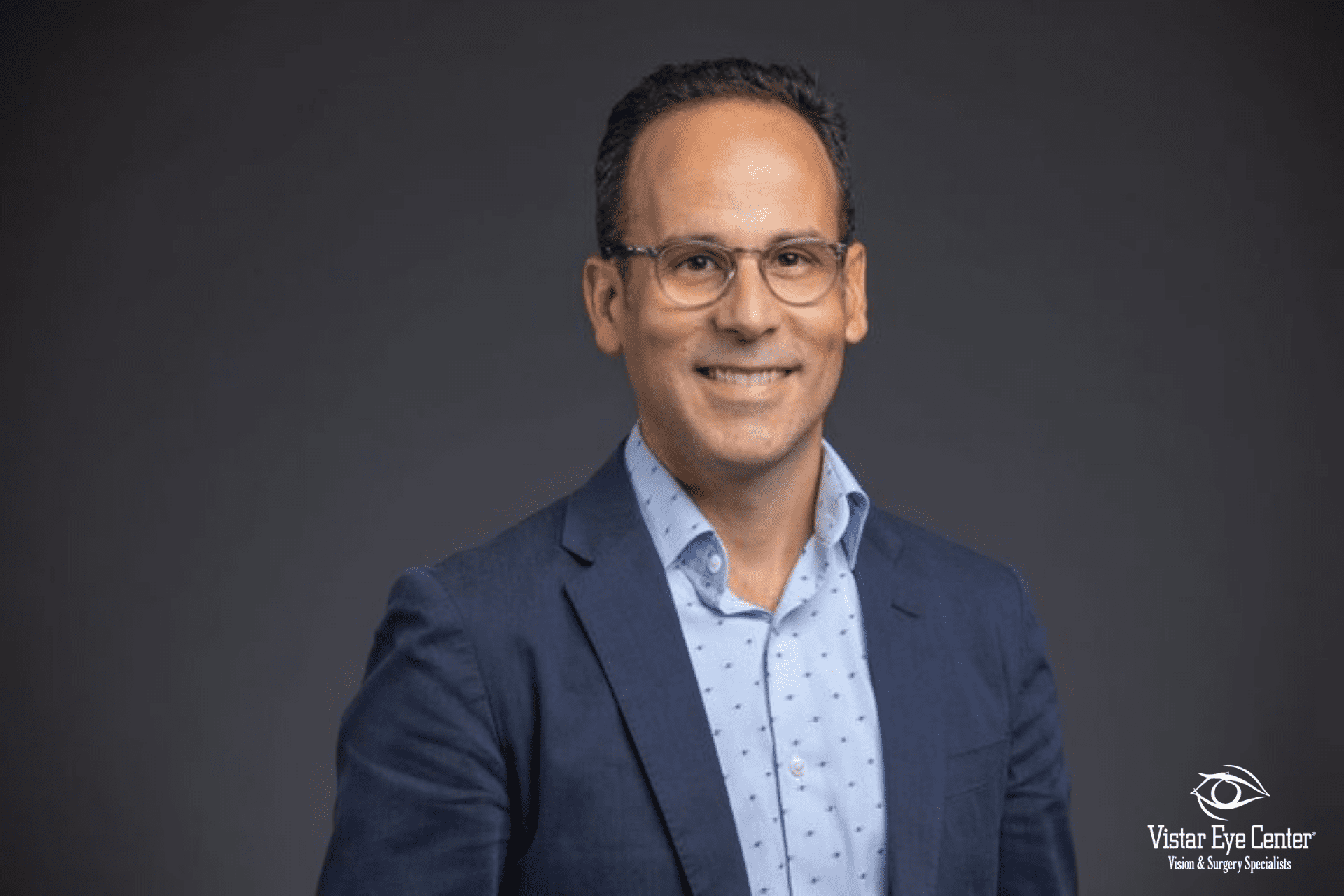Romulo Albuquerque M.D., Ph.D. Collaborates with UVA Scientists on Key Macular Degeneration Research
Eye care has come a long way in the past several decades. Cataracts can be removed quickly and relatively painlessly. Surgeries and medicines have been developed to effectively treat glaucoma. You can even receive LASIK surgery so that you don’t have to wear glasses anymore.
But there remains a disease that is the leading cause of vision loss: macular degeneration, which affects more than 10 million Americans (more than cataracts and glaucoma combined).
An Unsettling Diagnosis
Macular Degeneration is caused by a deterioration of the retina’s central portion, known as the macula. The macula is an important part of the retina and is responsible for the central part of your vision, making it possible for you to read and drive or even see someone’s face.
A macular degeneration diagnosis is unsettling as it is considered an incurable eye disease and can progress to the point where patients loose the central part of their vision.
However, there has been much progress in managing macular degeneration. Additional research is necessary to find a cure for the millions affected by this blinding condition.
A Step in the Right Direction
Thankfully, scientists are working to establish links that may one day help them find a cure to this dreaded disease.
Vistar Eye Center’s Romulo Albuquerque, M.D., Ph.D., is part of a team of scientists led by Drs. Bradley Gelfand and Jayakrishna Ambati at the University of Virginia who are tackling this very important issue.
“Macular degeneration can be dry or wet,” said Dr. Albuquerque. “The dry version has to do with cells dying, while the wet actually has to do with blood vessels growing.”
“It’s very puzzling for scientists that one disease has two forms with completely opposite basis,” explained Dr. Albuquerque.
But these scientists have recently discovered that patients who have either form of macular degeneration have excess of Alu, a toxic molecule that is similar to a virus.
“The research shows that there is one unifying mechanism that is responsible for both forms of the disease,” said Dr. Albuquerque. “Essentially, our study connected the two forms, opening a new and exciting window to develop a single treatment for both dry and wet macular degeneration.”
From Kentucky to Virginia
Dr. Albuquerque is currently practicing ophthalmology at Vistar Eye Center, but he has connections with Dr. Ambati that go back to his time completing his Ph.D.
“Dr. Ambati mentored me in pursuing my Ph.D.,” said Albuquerque. “I eventually became a professor at the University of Kentucky and continued to work with him.” That’s where he met Brad Gelfand, Ph.D., who worked on the same team of scientists looking for connections between wet and dry macular degeneration.
A few years later, Ambati and Gelfand moved to UVA to continue their research, and Albuquerque moved to Roanoke, Virginia, to pursue a career in private practice at Vistar.
“Brad is my friend and colleague, and Dr. Ambati is my mentor,” said Dr. Albuquerque, “so it’s nice that we can live less than 2 hours away from each other in the same part of Virginia.”
Dr. Albuquerque was one of many collaborators that contributed to this work. “It takes a team of people to make scientific discoveries,” he said, “and it takes a lot of time for research to become a clinical reality.”
While this is great news for macular degeneration research, it will likely be many years before it becomes a viable therapy for patients. “It is however, an important step in the right direction,” said Albuquerque. “As our population ages, there is going to be tremendous pressure to find a cure for this disabling condition.”
“Even though it is a long way off, it offers much needed hope for people suffering from Macular Degeneration that one day we can cure this disease all together,” said Dr. Albuquerque.

